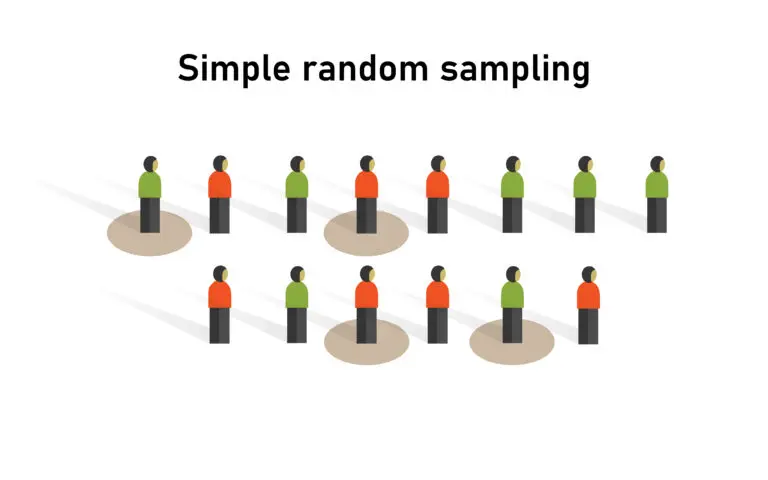Simple Random Sample

Table of Contents
What is Simple Random Sampling
A simple random sample is a sampling method where each member of a population has an equal chance of being selected for inclusion in the sample. This sampling technique is considered one of the most straightforward and unbiased methods of selecting a sample from a population.
Sampling Process
- The process starts with identifying a few initial participants, often referred to as “seeds.” These individuals are typically knowledgeable about the study topic and have connections within the target population.
- The seeds are interviewed or surveyed, and after participating in the study, they are asked to refer or nominate other individuals from their social circles who fit the study criteria and are willing to participate.
- The process continues iteratively, with new participants referring additional participants, hence the name “snowball,” as the sample size grows like a snowball rolling downhill.
Characteristics
The process of selecting the sample is done randomly, without any systematic bias or preference. This randomness helps minimize the risk of selection bias and ensures the sample is representative of the population.
Sampling Procedure
- To create a simple random sample, researchers typically use random number generators or random sampling techniques such as drawing names from a hat, using random number tables, or employing computer-generated random sampling methods.
- Each member of the population is assigned a unique identifier or number, and random selection is used to choose the required number of individuals or items for the sample.
Applicability
- Simple random sampling is suitable for populations where every member is easily identifiable and accessible and there are no specific subgroups or strata of interest.
- It is commonly used in survey research, opinion polls, quality control, and other applications where unbiased representation of the population is important.
Advantages
- Unbiased Selection: Simple random sampling ensures that each member of the population has an equal chance of being selected, leading to an unbiased sample.
- Ease of Implementation: The method is relatively easy to implement and does not require complex sampling techniques or stratification.
- Generalizability: When conducted properly, simple random sampling can yield results that are generalizable to the entire population.
Limitations
- Population List: Simple random sampling requires a complete list or sampling frame of all individuals or items in the population, which may not always be available or feasible.
- Randomness Challenges: Ensuring true randomness in the selection process can be challenging, especially with large populations or when using manual methods.
Simple Random Sample Example
Imagine a researcher wants to conduct a study on the eating habits of college students in a particular university. The researcher’s goal is to collect data from a representative sample of students to make inferences about the entire student population’s eating habits.
To achieve this, the researcher could use simple random sampling. Here’s how the process might unfold:
Define the Population: The population of interest is all college students at the university.
Identify Sampling Frame: The sampling frame is a list of all registered students at the university.
Select Sample Size: Determine the desired sample size, such as 200 students, based on statistical considerations.
Generate Random Sample: Use a random number generator or a random sampling method to select 200 students from the sampling frame. Each student has an equal chance of being selected.
Contact Selected Students: Reach out to the randomly selected students and invite them to participate in the study on eating habits. Ensure informed consent and provide necessary information about the study.
Collect Data: Conduct surveys, interviews, or observations to gather data on the selected students’ eating habits, including their dietary preferences, frequency of meals, snacking habits, etc.
Analyze Data: Analyze the data collected from the sample to draw conclusions about the eating habits of university students. Use statistical methods to infer population characteristics based on the sample data.
By using simple random sampling, the researcher aims to obtain a representative sample that reflects the diversity and variability of eating habits among university students.
This method helps ensure that each student has an equal chance of being included in the sample, reducing potential biases and increasing the study’s generalizability to the entire student population.
Related Links
Cluster Random Sample
Stratified Random Sample
Systematic Random Sampling
Types of Data in Statistics